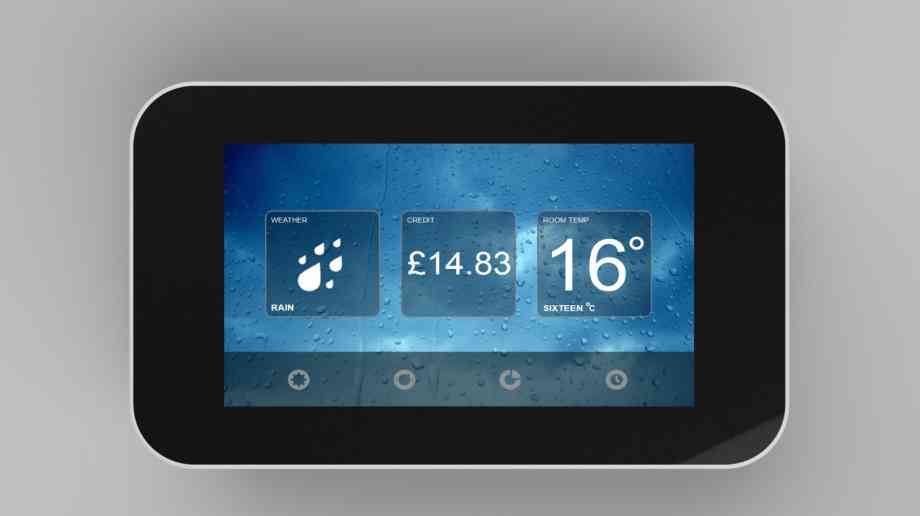Sue Robb of 4Children talks to Julie Laughton and Alison Britton from the Department for Education about the role of childminders in delivering the 30 hours free entitlement.

How digital technologies are maximising heat network performance
Digital technologies are raising the efficiency and reliability of heat networks, while improving affordability and transparency for customers. Richard Slee discusses the game changing innovations that are transforming performance
Heat networks are at last realising their full potential as a greener, cheaper way to heat urban homes – thanks in large part to digital advancements in heat metering and control and monitoring. Heat scheme operators can now gain full real-time visibility of performance across the entire network by combining advanced data analytics from heat metering, Building Energy Management Systems (BEMS), sensors and other measurement points. These insights can be accessed on any device to inform continuous optimisation of network performance and preventative maintenance strategies.
This intelligence-led approach ensures maximum efficiencies and reliable 24/7/365 operation, leading to cost and emissions reductions and greater transparency for customers. Potential operational issues can be predicted or immediately identified and corrected before a critical event is realised. By building alarms and triggers into the powerful business analytics, anomalies are flagged, which allows remote monitoring and engineering teams to make immediate changes to the control of the heat network.
In this way heat network owners and operators are making major progress in tackling key performance issues, such as overheating within communal areas, flow rates and return temperatures and pumping and primary fuel costs.
Smart metering solutions
Digitisation has transformed smart heat metering technology, which is critical to achieving compliance and can help building owners reach efficiency goals, for example in achieving the ENE3 code for sustainable homes. Residents are, however, the major beneficiaries of smart metering as the in-home display feature enables them to see their real-time energy consumption and how much it is costing them.
The Heat Network Billing and Metering Regulations make it mandatory to fit final customer meters and point of entry meters in new build heat network developments and most major refurbishment projects. In addition, customers must be billed using actual meter readings, rather than estimates, and billing information must be transparent and informative.
New generation smart meters, such as Switch2's Incontro and G6 systems, provide compliant pre-payment or credit billing and combine advanced monitoring and control features for residents. This makes it simpler for customers to budget and pay for their energy and track their energy usage, which leads to energy efficiency savings and lower bills.
Wolverhampton Homes cuts heat bills
Wolverhampton Homes, which manages more than 23,000 homes for Wolverhampton Council, has partnered with Switch2 to develop a complete digital heat metering strategy. Residents previously paid for their heating through a flat rate charge included within the rent, but agreed to transition to a more flexible, smart pay-as-you-go system combining heat interface units, heat meters and smart meters. By giving residents full visibility of how much heat they are using and their minute-by-minute energy spend , they have moderated consumption. This has reduced the average heat bill to £18 per month, delivering projected savings of between 30-50 per cent.
The accurate, transparent metering data is also helping to inform efficient operation of the energy plant, leading to optimised performance and higher efficiency operation.
Councils take smart approach
Sheffield City Council is also using digital technologies to improve reliability and affordability across its award winning district heating system that supplies 6,000 homes, as well as commercial buildings. Switch2 has installed smart meters and prepayment systems to all residential properties, which is resulting in an average cost saving of 38 per cent on heating bills and is ensuring compliance with the latest heat metering regulations.
Energetik, Enfield Council's local energy company, is also deploying Switch2's smart metering in every home connected to its community heat networks. The technology is being set up on a 'pay-as-you-go' basis, which will enable customers to manage and control how much energy they consume and pay for the heat they use in real time, plus an availability charge for the heat network infrastructure. The smart technology will also help vulnerable customers by using the data to identify erratic behaviour, for example, extended periods of heat usage when outside temperatures are warm and vice versa.
Positive future
Advances in technology are enabling the heat network industry to shift the focus from the plant room to whole system reliability and efficiency, which is part of a more holistic approach to maintenance and operation. This is paying off in terms of improved environmental performance, as well as lower operating and maintenance costs, which increases affordability for customers.
This bodes well for the continued rapid growth of the heat network industry, which has the potential to meet up to 20 per cent of UK heat supply by 2030, according to government forecasts.
Richard Slee is CEO of Switch2 Energy.
Company Focus
Located in Bromley, Japanese Knotweed Eradication Ltd has been providing solutions in the treatment and removal of Japanese Knotweed (Fallopia Japonica) for over a decade. During this time we have mastered a repertoire of methods, from herbicidal treatments to landscaping solutions, tailored to address the unique challenges our clients face with this pervasive weed.
Event Diary
UKREiiF has quickly become a must-attend in the industry calendar for Government departments and local authorities.
The multi-award-winning UK Construction Week (UKCW), is the UK’s biggest trade event for the built environment that connects the whole supply chain to be the catalyst for growth and positive change in the industry.
Supplier Profiles
Geo Energy
At GeoEnergy Design, we're on a mission to disrupt the traditional way heating and cooling ha
Latest Features
Professor Harith Alani, director of the Knowledge Management Institute at the Open University explains how AI can be used for good and bad.
Alex Lawrence, head of health & social care, techUK sets out techUK’s Five Point Plan for CareTech.












